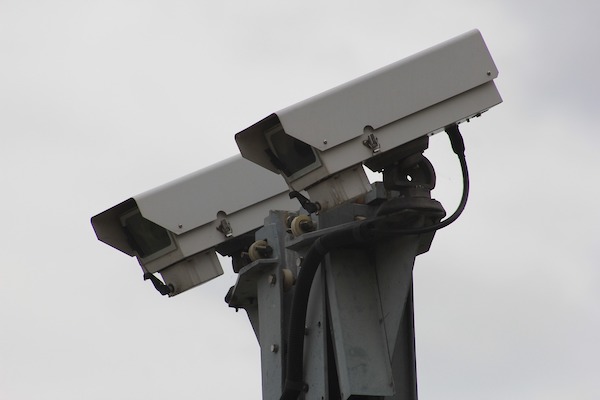
An expert vehicle identifier, an entomologist as well as firefighters, a coastguard and a paramedic were called to the stand yesterday in the trial of a man accused of murdering his “secret” lover and disposing of her body at sea.
Jamie Lee Warn (56) is accused of killing Zsuzsanna Besenyei (37) in 2018 and perverting the course of justice, which he denies.
The prosecution allege he hid her body in a car boot before dumping it at sea, as well as “pointing the finger of suspicion” at Ms Besenyei’s ex in a call to the Police as part of an attempt to “cover up” his actions.

Pictured: Yesterday, Andrew Wooller reviewed CCTV images.
Yesterday, Crown Advocate Simon Thomas, who is leading the prosecution, called a series of witnesses to the stand. This included, Andrew Wooller, the Managing Director of Acuity Forensics, a consultancy specialising in forensic identification of imagery evidence.
He explained that Jersey Police had contacted him to analyse CCTV footage to identify a vehicle and that he had been sent 56 separate clips.
He concluded that one type of vehicle was predominantly seen in the footage, adding that in some of the images it was not possible to identify the make and model.
In several clips, Mr Wooller said he could see what he described as a dark tone Ford Fiesta manufactured between 1995 and 2002.
The jury then heard that Ms Besenyei's car had been recovered 500 meters from the slip at La Haule. The front windows were fully open and the back ones only halfway. There was no key in the ignition, but a spare key was found on the main console. A police officer also found some secateurs near the front seat.
Luis Firmino, who examined the car after it had been fully dried said he hadn’t found any evidence that the car had been driven into the water.
The jury also heard from CSI Graham Dryland, who conducted a forensic examination of Mr Warn’s flat.
He said that no evidence of blood or of the flat being cleaned with chemicals had been discovered.
A camouflage rucksack was recovered from the flat. In it, officers found rubber gloves, hand gel and a cheque book in the name of Mr Warn.
Mr Dryland explained that Ms Besenyei's car was “totally saturated” and that, as a result, the possibility of recovering any fingerprints was limited.
Pictured: Zsuzsanna's car was recovered from St. Aubin's Bay, 500 metres from La Haule Slip.
Dr Martin Hall, an Entomologist, also took the stand via video link. He explained that several maggots had been collected from the deceased and sent to him for analysis.
He said they were from seaweed lies and had been laid several days before the body was recovered.
He said the eggs would have been laid on the seaweed and that Ms Besenyei's body must have been “lying for a period on seaweed on the seashore” for the eggs to transfer onto her.
Dr Hall said he had only found possible blow fly larvae. Blow flies are normally found on dead bodies, but the entomologist said that if the body had been stored in a closed space, it would have prevented the flies from accessing it.
He said he couldn’t rule out that more eggs had been washed out in the water.
Daniel Downey, Specialist Watch Officer for Jersey Coastguard, was the last witness called in the day. He explained how he had helped carry out a model of search and rescue based on the information provided by the police.
He said that if a body had entered the water at St. Aubin’s bay on either Sunday 13 or Monday 14 May 2018, there was a “possibility” it could have washed up at Stinky Bay.
However, he said that if a body had entered La Pulec on Monday 14 May, there was “a very high possibility” it would have washed up in the same area.
Following questions by Advocate Bell, Mr Downey admitted the models were "hypothetical enquiries" as they are based on a number of variables. He also said there was no accurate data for water movements close to shore and that as a result, the models were more accurate in open water.
The trial continues today.
Comments
Comments on this story express the views of the commentator only, not Bailiwick Publishing. We are unable to guarantee the accuracy of any of those comments.